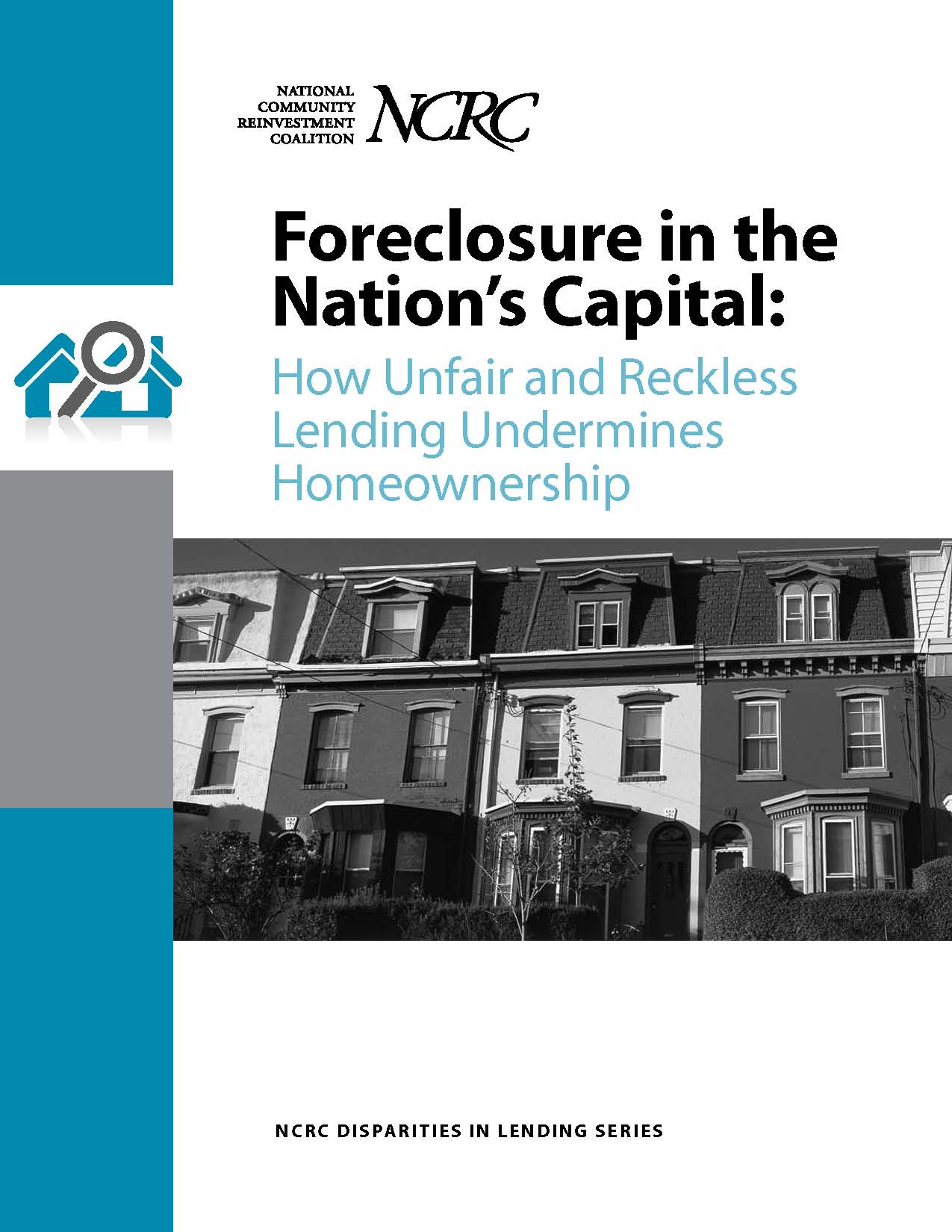New Study Shows Wall Street Pipeline Encouraged Risky, Abusive Loans
Study of DC area loans reveals racial component to lending and foreclosure unexplained by objective underwriting criteria
Washington, DC – As financial reform works its way through the Senate, a new study by the National Community Reinvestment Coalition (NCRC) indicates that subprime lending and subsequent resulting foreclosures were led by the private market and contained a clear racial component not explained by objective underwriting criteria. African American and Latino borrowers were more likely to receive a subprime loan, and to go into foreclosure, than similarly situated white homeowners, controlling for credit risk and other borrower, neighborhood and loan characteristics. The Government Sponsored Enterprises (GSEs) appeared to have a moderating effect on risky and abusive lending practices; privately securitized loans went into foreclosure twice as often as loans backed by the GSEs.
“Private market players, from brokers, to mortgage lenders, to Wall Street, created a lending pipeline typified by risky, abusive and unfair practices,” said John Taylor, president and CEO of NCRC. “It is a shameful condition that borrowing while black or Latino remains a hazard in this country. Without strong regard for the risky characteristics of the products they were peddling, lenders and Wall Street chose short-term profits over fair and prudent lending. These risky products were targeted to certain communities at first, and then spread elsewhere.”
“In the very place that Congress calls home, the ongoing existence of these problems is unconscionable. The study demonstrates the need for strong financial reform and the creation of an independent Consumer Financial Protection Agency that many of us have understood for a long time,” said John Taylor. “The existing regulators have simply failed in their duty to protect American consumers. What’s more, the troubling racial disparities demonstrate the ongoing necessity of the Community Reinvestment Act, which needs to be strengthened and expanded to cover mortgage lenders and Wall Street, the chief purveyors and purchasers of risky, subprime loans.”
The study uses regression analysis to examine a statistical sampling of loans in the Washington, DC area. The patterns presented are similar to national trends. The findings of the study include:
• The econometric analysis of the study confirms that individual African-American and Latino borrowers obtained subprime loans more often than white borrowers with similar credit scores, incomes, loan-to-value ratios, and neighborhood characteristics. The study confirms that disparities in lending have a clear racial component that has not been adequately addressed through enforcement of the nation’s fair lending laws.
• Even controlling for other factors, Latinos were 70 percent more likely and African Americans 80 percent more likely than their white counterparts to receive a subprime loan. This finding suggests that race, in and of itself, alters the likelihood of receiving a subprime loan.
• Minority borrowers are facing foreclosure more often than white borrowers, even after controlling for borrower, loan, and neighborhood characteristics. The study finds that minorities are disproportionately affected by the foreclosure crisis, beyond levels that can be explained by objective criteria.
• African Americans were almost 20 percent more likely and Latinos were 90 percent more likely than their similarly situated white counterparts to go into foreclosure. This suggests that race, in and of itself, alters the likelihood a borrower will go into foreclosure.
• Loans purchased by the Government Sponsored Enterprises (GSEs) are going into foreclosure at roughly half the rate of both portfolio loans and privately securitized loans. This suggests that the standards imposed by the GSEs have encouraged the origination of safe and sustainable loans.
• Loan characteristics, especially payment-to-income ratios, adjustable rates, high-costs (subprime) and balloon payments were found to have a significant effect on loan performance. The study breaks down the influence of each of these factors in a regression model.
The National Community Reinvestment Coalition is an association of more than 600 community-based organizations that promote access to basic banking services, including credit and savings, to create and sustain affordable housing, job development and vibrant communities for America’s working families.
Click here to download a PDF of the Press Release
Click here to download a PDF of the Executive Summary

![]() Click here to download a PDF of the Full Study
Click here to download a PDF of the Full Study


